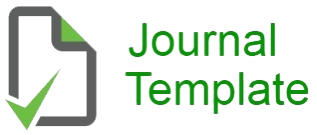THE INTERSECTION OF TECHNOLOGY AND EMPLOYEE EXPERIENCE IN ENHANCING ENGAGEMENT AND SATISFACTION
Keywords:
Technology, Employee Experience, Engagement, Satisfaction, Digital Communication, Wellness Apps, HR Technology, Ethical Considerations, Future Trends, Workplace Culture.Abstract
This research explores the nexus of technology and employee experience, delving into their combined influence on engagement and satisfaction in the evolving workplace. Rapid technological advancements necessitate reexamining human resources practices, prompting a comprehensive literature review. Key themes include the impact of digital communication tools, the transformative role of wellness apps, ethical considerations in HR technology, and emerging trends. Findings highlight the intricate dynamics shaping the employee experience, stressing the importance of balancing technological integration while preserving the human touch. The implications for practice and policy offer actionable recommendations for organizations, emphasizing cultivating a workplace culture prioritizing employee well-being. This study contributes to understanding how strategically employed technology can optimize engagement and satisfaction, providing insights for organizations navigating the dynamic landscape of the modern workplace.
References
Allioui, H., & Mourdi, Y. (2023). Exploring the Full Potentials of IoT for Better Financial Growth and Stability: A Comprehensive Survey. Sensors, 23(19), 8015.
Bagchi, S., Yuan, R., & Engleman, E. G. (2021). Immune checkpoint inhibitors for cancer treatment: clinical impact and mechanisms of response and resistance. Annual Review of Pathology: Mechanisms of Disease, 16, 223-249.
Bankins, S., Ocampo, A. C., Marrone, M., Restubog, S. L. D., & Woo, S. E. (2023). A multilevel review of artificial intelligence in organizations: Implications for organizational behavior research and practice. Journal of Organizational Behavior.
Cameron, K. (2021). Positively energizing leadership: Virtuous actions and relationships that create high performance. Berrett-Koehler Publishers.
Contreras, F., Baykal, E., & Abid, G. (2020). E-leadership and teleworking in times of COVID-19 and beyond What we know and where do we go. Frontiers in Psychology, 11, 590271.
Ebneyamini, S., & Sadeghi Moghadam, M. R. (2018). Toward developing a framework for conducting case study research. International journal of qualitative methods, 17(1), 1609406918817954.
Gross, R. (2018). Connecting the links between leadership styles and virtual team effectiveness. Journal of Enterprising Culture, 26(02), 185-205.
Harisha, B. S., Venkataswamy, K. P., Devi, R. M., Govindaraj, G. S., & Bhandwalkar, S. S. (2023). The Role Of Artificial Intelligence In Hr: Transforming Recruitment And Hr Operations. Boletin de Literatura Oral, 10(1), 1374-1384.
Kişi, N. (2023). Bibliometric analysis and visualization of global research on employee engagement. Sustainability, 15(13), 10196.
Köchling, A., & Wehner, M. C. (2020). Discriminated by an algorithm: a systematic review of discrimination and fairness by algorithmic decision-making in the context of HR recruitment and HR development. Business Research, 13(3), 795-848.
MacGregor, J. C., Naeemzadah, N., Oliver, C. L., Javan, T., MacQuarrie, B. J., & Wathen, C. N. (2022). Women’s experiences of the intersections of work and intimate partner violence: A review of qualitative research. Trauma, Violence, & Abuse, 23(1), 224-240.
Madan, P., Tripathi, S., Khalique, F., & Puri, G. (Eds.). (2022). Re-envisioning Organizations Through Transformational Change: A Practitioners Guide to Work, Workforce, and Workplace. CRC Press.
Modell, S. (2005). Triangulation between case study and survey methods in management accounting research: An assessment of validity implications. Management accounting research, 16(2), 231-254.
Nassar, A., & Kamal, M. (2021). Ethical Dilemmas in AI-Powered Decision-Making: A Deep Dive into Big Data-Driven Ethical Considerations. International Journal of Responsible Artificial Intelligence, 11(8), 1-11.
National Academies of Sciences, Engineering, and Medicine. (2017). Information Technology and the US Workforce: Where Are We and Where Do We go from Here? National Academies Press.
Peng, Y., & Lorenzo, L. C. (2023). Corporate Sales in the Digital Era: The Relationship between Human Resource Technology Integration and Organizational Performance. Frontiers in Business, Economics and Management, 10(2), 289-303.
Piplani, R. S. (2018). I am stuck in a rut. Can I try something different? The role of intrinsic motivation and mood in the creative performance of ICT professionals: a thesis presented in partial fulfillment of the requirements for the degree of Master of Business Studies in Human Resource Management at Massey University, Albany, New Zealand (Doctoral dissertation, Massey University).
Rosenbloom, D. H., Kravchuk, R. S., & Clerkin, R. M. (2022). Public administration: Understanding management, politics, and law in the public sector. Routledge.
Ruhle, S. A., Breitsohl, H., Aboagye, E., Baba, V., Biron, C., Correia Leal, C., ... & Yang, T. (2020). “To work, or not to work, that is the question”–Recent trends and avenues for research on presenteeism. European Journal of Work and Organizational Psychology, 29(3), 344-363.
Schäpke, N., Stelzer, F., Caniglia, G., Bergmann, M., Wanner, M., Singer-Brodowski, M., ... & Lang, D. J. (2018). Are they jointly experimenting with transformation? Shaping real-world laboratories by comparing them. GAIA-Ecological Perspectives for Science and Society, 27(1), 85-96.
Seibert, S. E., Kraimer, M. L., & Heslin, P. A. (2016). Developing career resilience and adaptability. Organizational Dynamics, 45(3), 245-257.
Tiku, S. (2023). AI-induced labor market shifts and aging workforce dynamics: A cross-national study of corporate strategic responses in Japan, USA, and India. USA, and India (August 9, 2023).
Tobolowsky, B. F., & Allen, T. O. (2016). On the Fast Track: Understanding the Opportunities and Challenges of Dual Credit: ASHE Higher Education Report, Volume 42, Number 3.
Tracy, S. J. (2019). Qualitative research methods: Collecting evidence, crafting analysis, communicating impact. John Wiley & Sons
Downloads
Published
Issue
Section
License
Copyright (c) 2024 INTERNATIONAL JOURNAL OF ECONOMIC LITERATURE

This work is licensed under a Creative Commons Attribution-NonCommercial-ShareAlike 4.0 International License.
INTERNATIONAL JOURNAL OF ECONOMIC LITERATURE © 2023 by Adisam Publisher is licensed under CC BY-SA 4.0







